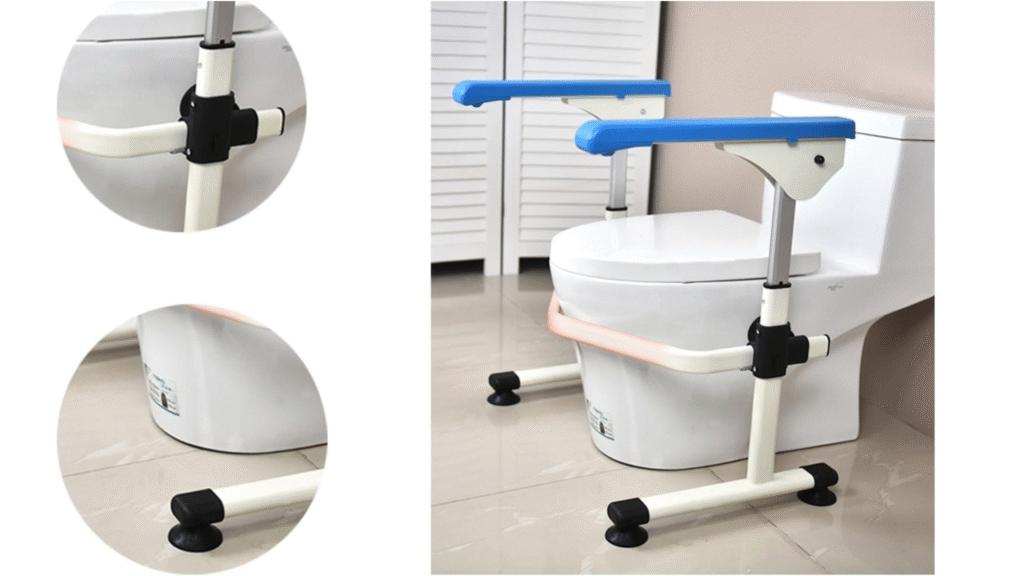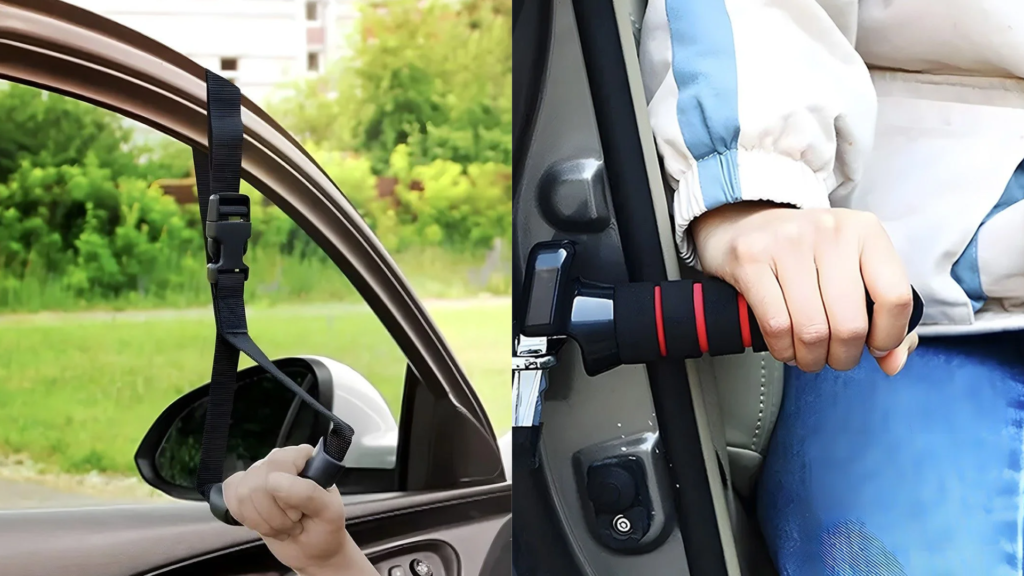Installing a toilet grab rail can significantly improve bathroom safety for elderly users, individuals with disabilities, and anyone needing extra support. However, improper installation can cause serious safety risks, especially in aged care or NDIS-approved environments.
In Australia, grab rails must be installed in accordance with the AS 1428.1 standard, which outlines placement, height, and safety requirements. This guide walks you through how to install toilet grab rails safely, following Australian standards, while considering funding support options like NDIS and SWEP.
Why Proper Installation Is Critical
Grab rails that are incorrectly positioned or poorly secured may:
- Fail under load
- Encourage unsafe posture
- Obstruct access to the toilet
- Void compliance with NDIS or aged care safety standards
Correct grab rail installation provides:
- Enhanced stability during transfers
- Increased confidence and independence for users
- Reduced risk of slips and falls
- Peace of mind for carers and family members
Explore toilet grab rails designed for Australian homes and care facilities.
Understanding Australian Safety Guidelines (AS 1428.1)
The AS 1428.1:2021 standard is the guiding document for accessible design in Australia. For toilet grab rails, it outlines key installation requirements for height, position, length, and anchoring.
Key Requirements
- Horizontal grab rail
- Mounted at 800mm to 810mm above the finished floor level
- Minimum length: 850mm
- Starts 300mm in front of the toilet pan and extends 450mm behind
- Positioned between 50mm–60mm from the wall
- Rear grab rail (optional in some homes)
- Mounted behind the toilet, 150mm above the seat level
- Fixings
- Must be securely anchored into wall studs or structural supports
- Rails must withstand a force of 1100N (approx. 110kg) without detaching
These measurements ensure that grab rails for toilets can support most users safely and meet compliance for NDIS and aged care settings.
Choosing the Right Type of Grab Rail
Not all grab rails are suitable for every bathroom. The right choice depends on the user’s mobility level, the layout of the toilet, and wall surface.
Common Types
- Straight rails: Simple horizontal design, most common
- L-shaped rails: Support both horizontal and vertical movements
- Drop-down rails: Foldable, ideal for shared bathrooms
- Angled rails: Provide natural arm movement for transfers
- Toilet surround frames: Portable, no wall mounting required
Explore our NDIS-compliant toilet rails for permanent and temporary installation options.
Step-by-Step Installation Process
Here’s a simplified guide to safely installing a toilet grab rail in compliance with AS 1428.1:
Tools and Materials Needed
- Grab rail (AS 1428.1 compliant)
- Drill and masonry/timber bits
- Wall anchors and fasteners
- Level and measuring tape
- Stud finder
- Safety gear (goggles, gloves)
Installation Steps
- Mark Grab Rail Position
- Measure 800–810mm from floor to mark the height
- Ensure placement is 300mm forward and 450mm behind toilet pan
- Check Wall Structure
- Locate wall studs or install additional bracing if needed
- Use a stud finder to identify safe anchoring points
- Drill Holes for Mounting
- Use appropriate drill bits for tile, masonry, or timber
- Avoid damaging waterproofing membranes or electrical lines
- Secure Grab Rail to Wall
- Use stainless steel screws or manufacturer-supplied hardware
- Ensure rail is level and tightly fixed
- Test for Strength and Position
- Apply weight to confirm no movement
- Confirm correct distance from wall and seat
For complex installations in tiled bathrooms or brick walls, hiring a professional installer is highly recommended.
When to Consult a Professional
DIY installation may not always be appropriate, especially in:
- Homes without stud walls or accessible fixing points
- Aged care or NDIS-funded environments requiring certification
- Homes needing multiple grab rails or full bathroom modifications
Consider Professional Help When
- Working with waterproofed or tiled walls
- Installing drop-down or complex L-shaped rails
- Seeking NDIS or SWEP reimbursement that requires proof of compliance
Need help? Contact us for installation guidance or local tradesperson recommendations.
Funding Options via NDIS or SWEP
Toilet grab rails can be funded under:
- NDIS Assistive Technology (AT) supports
- Home Modifications category (for fixed installations)
- Statewide Equipment Program (SWEP) in Victoria
NDIS Eligibility
- Must support a participant’s stated goal (e.g., independence in toileting)
- Requires an occupational therapist assessment
- Installation should be completed by a qualified provider for mid- to high-risk AT items
SWEP Assistance
- Available to non-NDIS eligible individuals in Victoria
- Requires a health professional to complete the application
- Covers equipment and installation in many cases
Submit a product enquiry for help accessing funding or OT referrals.
Conclusion
Installing a toilet grab rail is one of the most effective ways to improve bathroom safety for elderly Australians and individuals living with a disability. By following the AS 1428.1 safety guidelines, choosing the right product, and securing it correctly, you can create a safer and more independent environment.
- Browse our full range of toilet grab rails
- Contact us for expert product advice or professional installation support
- Submit an enquiry for NDIS or SWEP-compliant equipment quotes
Frequently Asked Questions (FAQs)
- What is the correct height for a toilet grab rail in Australia?
The horizontal rail should be mounted 800–810mm above the finished floor, in line with AS 1428.1 standards. - Do grab rails need to be installed into wall studs?
Yes, for safety, they should be fixed into studs or strong supports that can withstand up to 110kg of force. - Can I install grab rails myself?
While possible in some cases, professional installation is recommended for NDIS or aged care settings requiring compliance and certification. - What type of grab rail is best for elderly users?
Straight or L-shaped rails provide versatile support for toilet transfers. Drop-down rails are useful in shared bathrooms. - Is funding available for toilet grab rails in Australia?
Yes. NDIS and SWEP both provide funding for eligible individuals based on an OT assessment and documented need.



